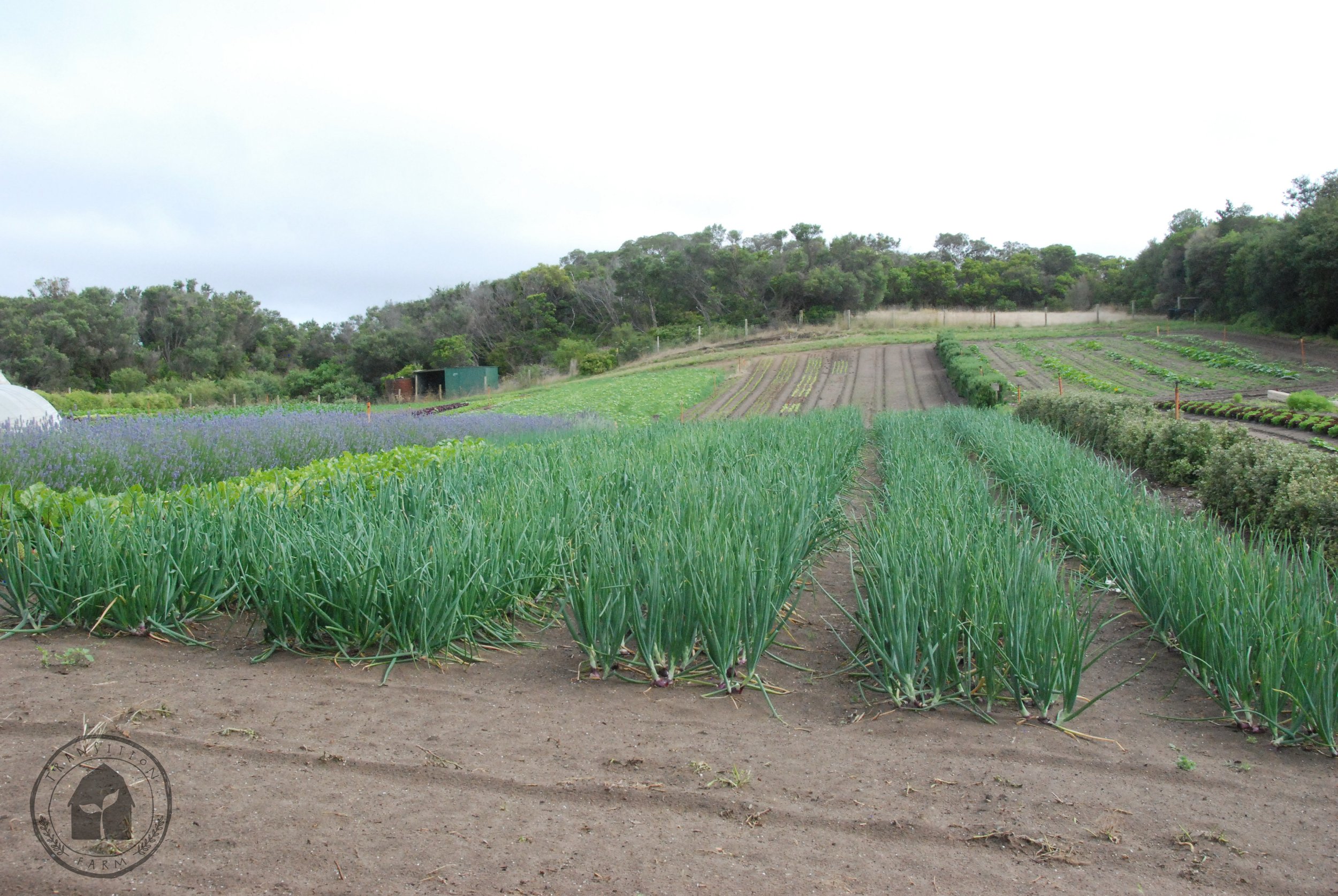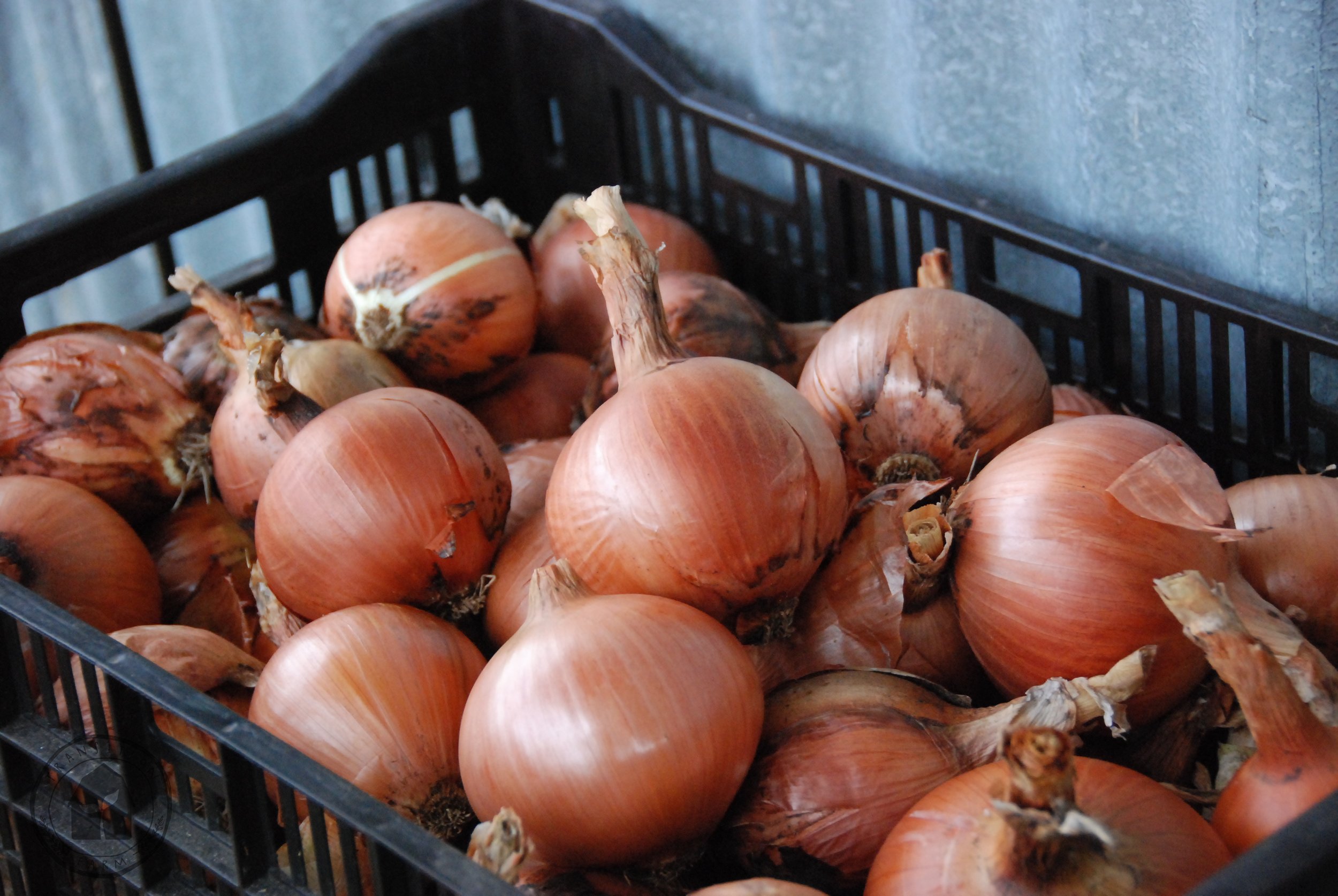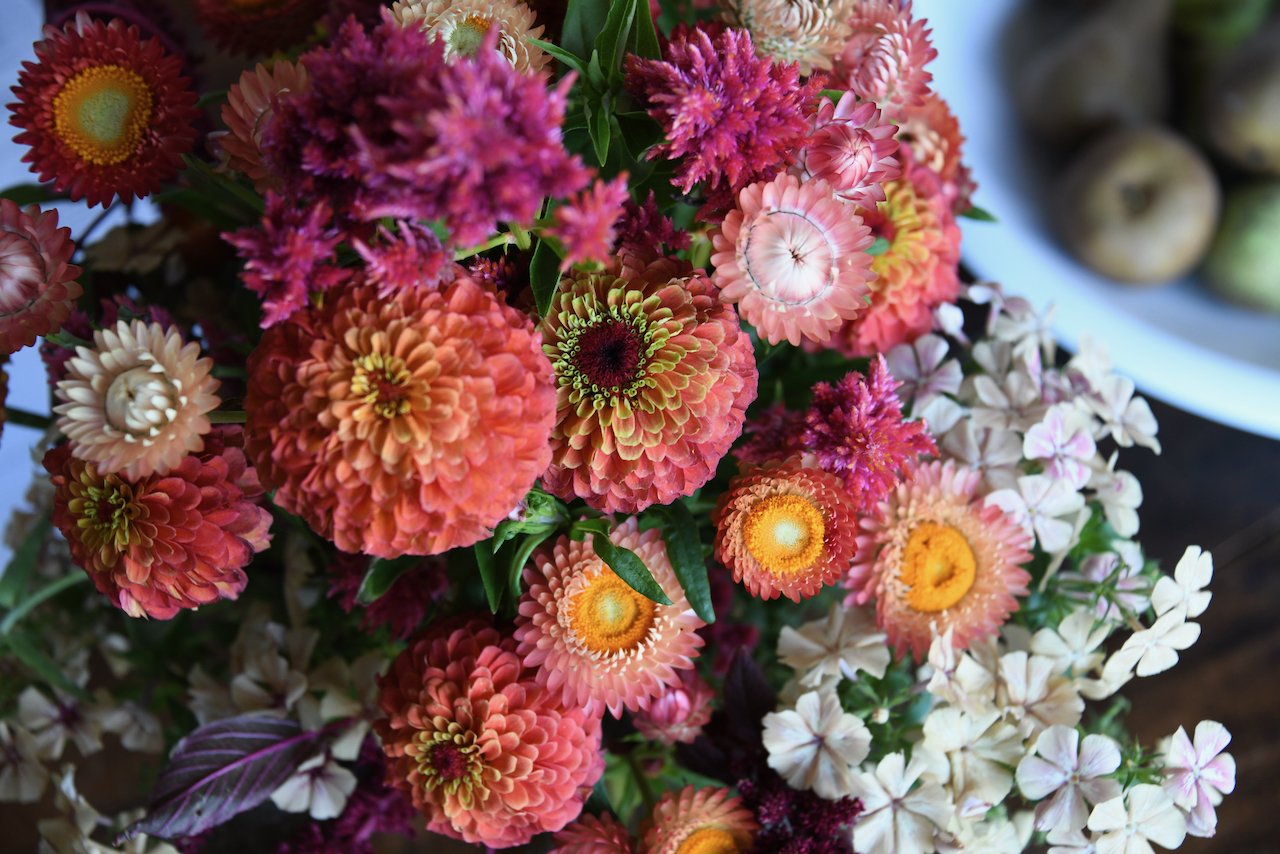Variety Spotlight - 'ITALIAN LONG KEEPER' - the deep flavored storage onion perfect for winter cooking
/For the past 12 years we have been running variety trials - searching for varieties that suited our region, a certain seasonal harvest window, a texture or flavour that offered culinary inspiration, a colour or form that made us marvel at natures creations. We have found that uniqueness is highlighted in side-by-side comparisons and through each trial we have discovered special gems. ‘Italian Long Keeper’ onion is one of those!
We did a storage onion trial searching for an onion that would still be viable in Spring before our new season onions were ready. After tomatoes, onions are the most consumed vegetable in the world - they are also one of the oldest vegetables in continuous cultivation dating back to at least 4,000 BCE. The ancient Egyptians are known to have cultivated this crop along the Nile River. As such, there is incredible diversity with many, many varieties offering each season something special. The results of our storage onion trial unearthed something unexpected - one particular variety offered a flavour profile that was much deeper then the simple onion pungency.
Onion trials growing at Transition Farm
‘Italian Long Keeper’ was immediately different from the other brown storage onions when we cut it. We were accessing the tightness of rings, a good indicator of storability, and were immediately struck by a difference in smell. The other onions in the trial were just strong and “onion-y” but ‘Italian Long Keeper’ had a more complex character to the smell. With other onion trials we have done taste tests to highlight differences in tastes - comparing raw, braised and high heat roasting. We had not considered doing that with the storage onions until we cut open the ‘Italian Long Keeper.’
The taste test was amazing. Onions are inherently pungent - Pungency is largely due to the level of sulfur - based non-protein amino acids they contain. And because of their value to the agricultural market, much research has been done on pungency, the pyruvic acid concentration which create it, how time and mastication increase this and the ability to produce open pollinated onions which are selected for low pungency, higher soluble sugars. ‘Italian Long Keeper’ was the only storage onion that caramelized - a direct result of its higher sugar content.
Having been born and raised in south Florida and having a chef grandfather who would drive through Georgia to visit, I was well versed in the sweet onions cultivated in Videlia! ‘Videlia’ onions are a sweet, SHORT day length onion incredible raw and braised and well known in America. Although soil types and climate increase soluble sugars, the studies showed that inherent low pungency - high soluble sugar can be used as a selection criteria for seed stock. And finding this in an INTERMEDIATE to LONG day length onion was really exciting to me!
‘Italian Long Keeper’ was the only brown storage onion in our trial that not only stored well into Spring, but also retained through storage a low pungency and high sugar rating - storage and cutting do increase the pyretic acid in onions which cause humans to tear up slicing them.
While there were other storage onions in the trial of merit, due to the need to isolate seed stock by 450m and the small size of our farm, we are limited in the number of varieties we can grow as a seed crop each season. We grow the onion in the first season and then select those onions that will be replanted in the second season to produce onion seed. Onions take 18-22 months from seed to seed.
Our selection criteria includes:
Flavour - the top of each onion was sliced off, tasted and smelled to ensure a high sugar, low pungency profile
Deep golden skin colour and a tight wrapping skin (a strong skin stores better)
Tight neck - again ensures the storability
Globe shape
Single core - a single core onion is preferable for commercial growing and usage
Wanting to know more about this onion, and understanding that when open pollinated seed is passed through a family and a community, it may slowly lose one name and gain another, I started researching long storing onions in Italy. I was continually drawn to a variety called ‘Oro d’Parma’ - Gold from the Parma region of Italy. A long day length, sweet storer, this variety attributes its flavour to its region - the unique combination of soil, water, climate - its intrinsic Terrior. I believe and respect that uniqueness and so we have retained the name ‘Italian Long Keeper’. We and other breeders do believe the origins of this variety stem from those onions from Parma - and it has been confirmed that the variety maintains both the globe and high top onion shape. Although our region is different from Parma, Italy, the selection criteria of open pollinated breeds offers us the ability to carry through intrinsic genetic characteristics - in this case a high soluble sugar content and lower pungency or pyretic acid content in a long storage onion - which, without attention, may otherwise be lost. We consider this genetic “shoring up” to be our role in seed curating.
If you ask, “Why should I grow onions when they are so cheap in the grocery store?” Beyond the many complex topics including but not limited to seed ownership, seed monopolies and the loss of food diversity, FLAVOUR! ‘Italian Long Keepers’ intrinsic flavour added a stickiness to every stew, sauce and soup we made all winter - something tangible, different and so very tasty. It is unique in such a humble and dare say devalued vegetable that it sent me on a many year search for its origin and how to preserve the variety.
Onion flowers being pollinated by a European honey bee
ADDITIONAL NOTES:
Nature versus nurture - Can the way an onion grows effect its pungency, soluble sugar and flavonoids?
YES!! Again, the sweet onion market is HUGE and so much research has been done to encourage a sweet onion flavour. Studies focus on soil additives like sulfur - necessary to form a strong skin in a storage onion and the pyretic acid content to form onion pungency and how the amount of sulfur available at growing can effect the soluble sugars.
And then you have biodynamic growers like us who would say that our onions are inherently sweeter because their growth is guided by sunlight - their roots are able to mine for the nutrients they need, and their vibrant health translates into a higher Brix or sugar reading. Growing using photosynthesis - as opposed to water soluble fertilizers (even organic ones) - also allows each plant to acquire a fuller flavour as they are accessing and synthesizing a more diverse mineral palate.
We are distilling this further though into genotypes and researching how genotypes can inherently metabolize the same soil, air, water and climate in remarkably different ways. Hence taste testing a range of brown storage onions all grown on the same farm in the same plot under the same conditions. And then we are asking - can those genotypes develop epigenetic chains that offer them further information on how to mine for minerals, photosynthesize and grow using just sunlight and adjusting so many variables in their form and nature to survive?
And again, YES! Genotypes offer us a great start in open pollinated breeding. Epigenetics offer us resilience in growing in living soil with growth being guided by sunlight and adapting to ever changing climate, pest and other stresses.



















